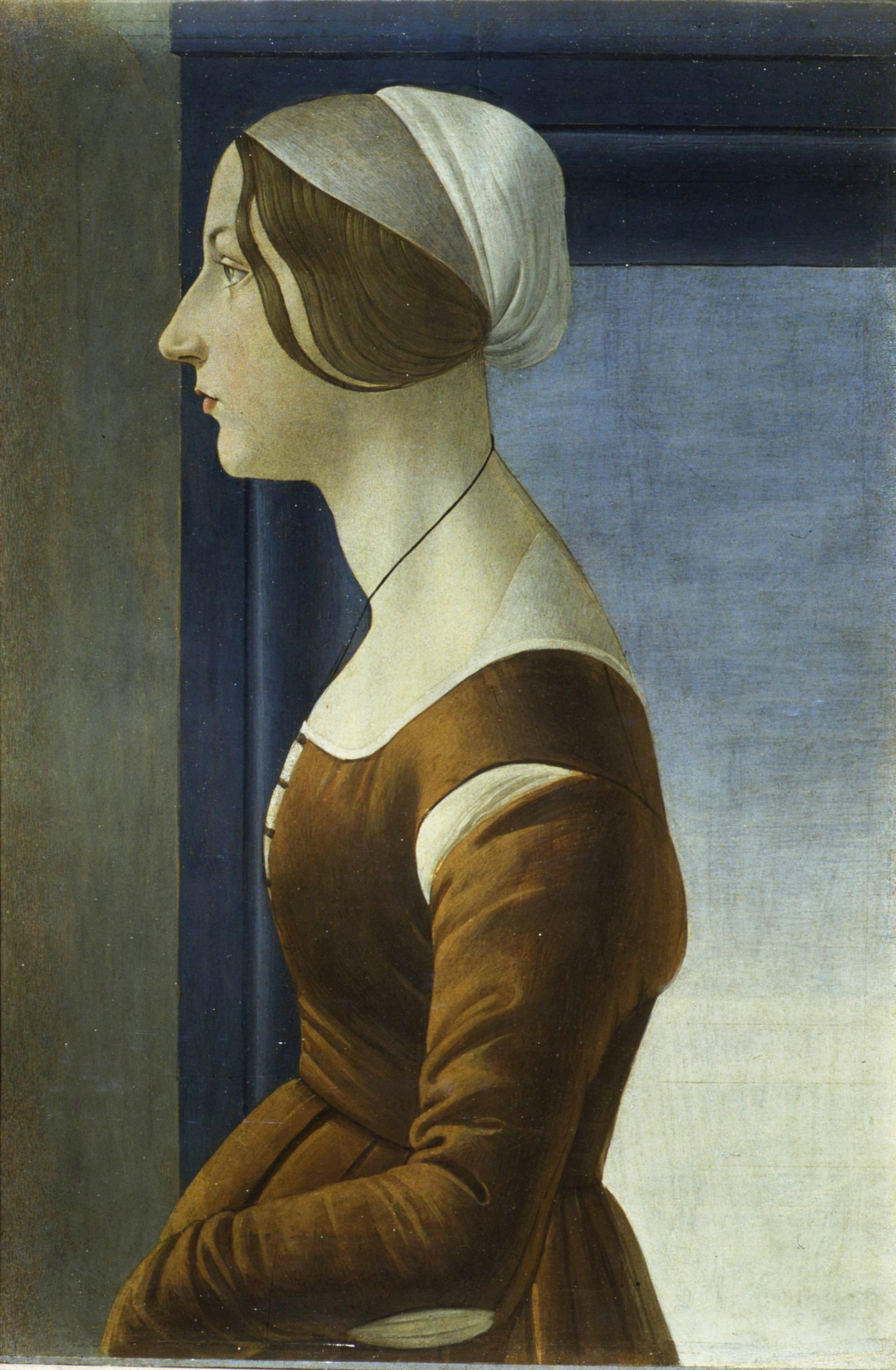Portrait of a lady
Sandro Botticelli (Firenze 1445-1510)
The painting is also known by the title “Bella Simonetta”, based on an early identification of the young woman as Simonetta Cattaneo (1453-1476), a Genoese noblewoman who went on to marry the Florentine Marco Vespucci in 1469 and was loved by Giuliano de’ Medici. In the tradition of Italian portrait painting in the early Renaissance, inspired by ancient coins, the woman is depicted in profile, a pose which enabled the artist to faithfully represent facial features, hairstyles and clothing which were essential indicators of the subject's social status. However, in this case the woman wears no jewelry and is not shrouded in excess luxury: the sophistication of the gown, a gamur, is portrayed only by its crimson color, very much in fashion at the time, and the puffed sleeves created by the cuts in the fabric, separated from the gown itself. As well as her beauty, the portrait appears to emphasize the woman's modesty and demure nature, set in the intimacy of the domestic environment in accordance with the hierarchal values of Renaissance Florentine society. The gray stone jamb emphasizes the woman's face, which is characterized by the candor of natural skin tones.
